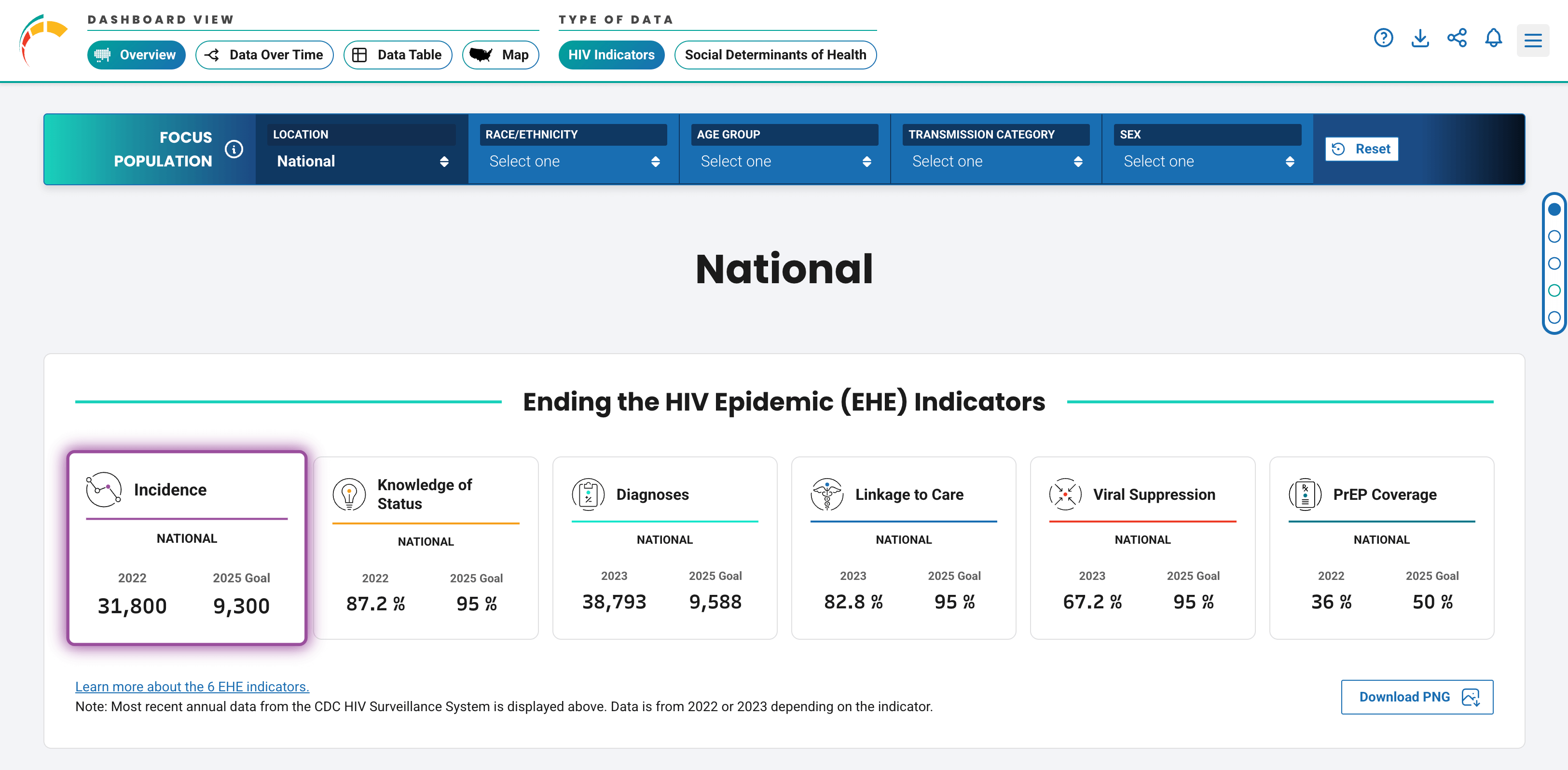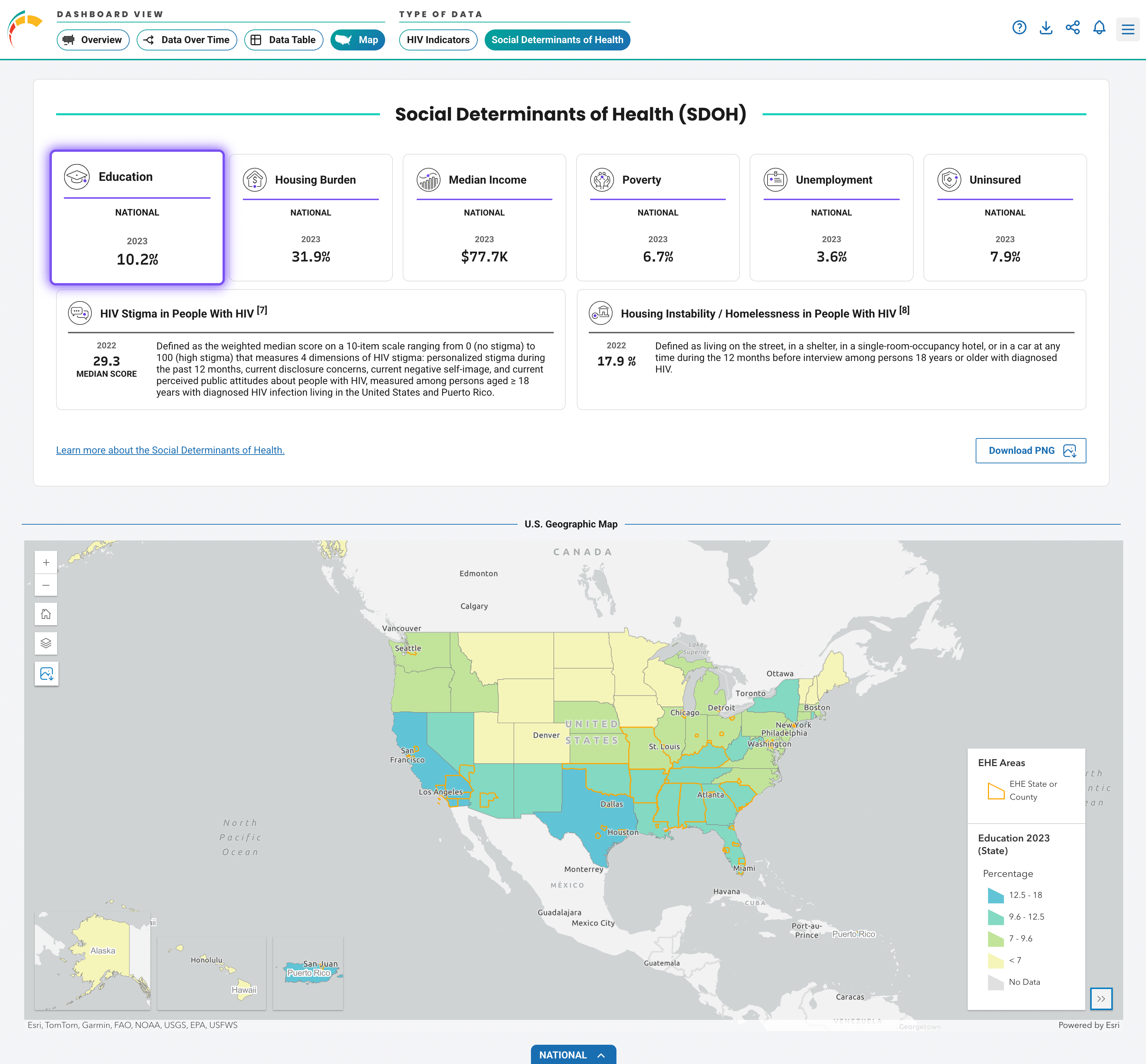AHEAD: America’s HIV Epidemic Analysis Dashboard

AHEAD is a tool supporting implementation of the Ending the HIV Epidemic in the U.S. (EHE) initiative, tracking progress toward its goals. The interactive dashboard tracks the six EHE indicators in the 57 prioritized jurisdictions as well as for all states and for the nation.
What Are the EHE Indicators?
The indicators are:
- HIV incidence
- Knowledge of HIV status
- HIV diagnoses
- Linkage to HIV medical care
- Viral suppression
- PrEP coverage
View the images below for samples of the new EHE indicators data filters and results displays on AHEAD:



What Other Data Is Available on AHEAD?
The indicator data for the EHE jurisdictions and all states can be filtered by demographic characteristics such as age, race/ethnicity, sex at birth, and transmission category. AHEAD also provides links to definitions of the indicators and their data sources as well as links to other data tools from CDC and HRSA that users can explore.
The dashboard also presents data on eight social determinants of health indicators for the same jurisdictions, providing additional context on these factors that influence HIV risk and health outcomes among people with HIV:
- Poverty
- Unemployment
- Uninsured
- Education
- Median Income
- Housing Burden
- Housing Instability or Homelessness in People with HIV
- HIV Stigma in People with HIV
View the image below for a sample of the SDOH information display available on AHEAD:

How Can You Use AHEAD?
AHEAD can help stakeholders evaluate the nation's progress toward reaching the goals of the EHE initiative and to use the state- and county-level data to inform and tailor local EHE- and HIV-related community planning efforts.